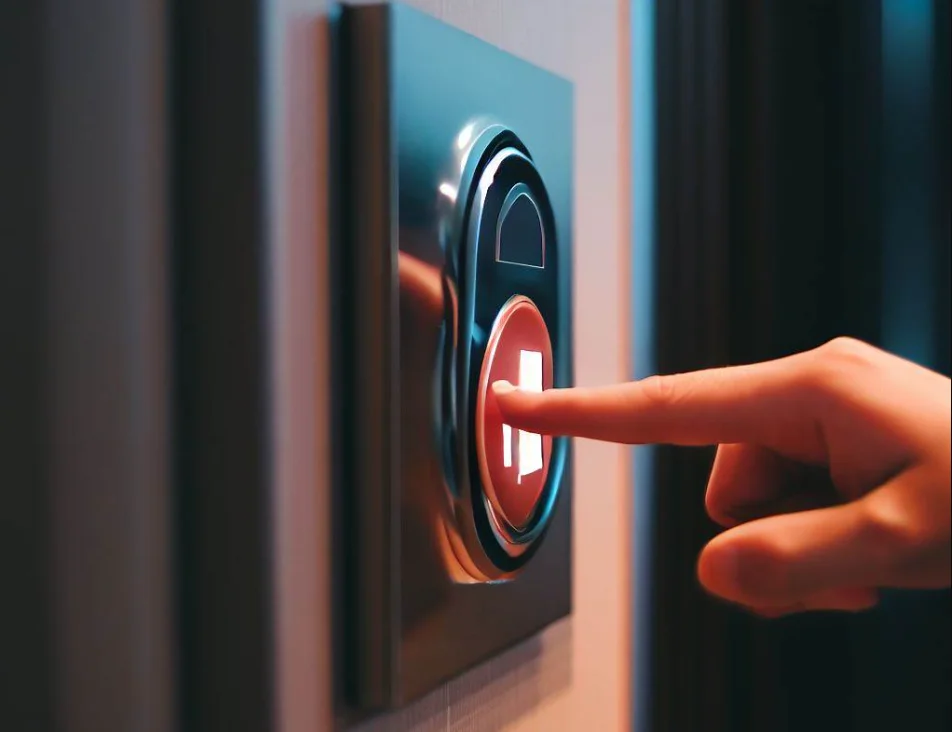As violence and injuries plague American workplaces, workplace panic buttons have emerged as an essential measure to instantly call for help when employees feel threatened on the job. High-risk industries like healthcare, retail, hospitality, and social services now rely on panic buttons to safeguard vulnerable staff.
Our company JET Hotel Solutions (https://www.jethotelsolutions.com/) will examine the benefits of panic buttons for workers and organizations, proper implementation methods, and how these devices provide a lifeline for those who need it most.
The Alarming Dangers Facing US Workers
While work is supposed to provide security and stability, a disturbing epidemic of violence plagues American workspaces.

Shocking spikes in hostility emerged during the Covid-19 pandemic, as anxieties and enforcement of rules provoked public rage against frontline staff. Healthcare workers endured a 139% surge in assaults. Retail workers faced dramatic increases in ‘take this job and shove it’ incidents according to loss prevention experts.
The crisis takes a harrowing toll on mental health. Many now work in fear while organizations face ballooning costs from turnover, leaves of absence, added security, and OSHA penalties. Workplace panic buttons offer a critical lifeline.
The Vital Purpose of Panic Buttons
A panic button is an alarm that lets employees instantly summon help when facing threatening, aggressive, or dangerous situations on the job. It provides workers with a quick, silent, and discreet way to signal an emergency and bring rapid aid before violence escalates.
Pressing a fixed panic button or wearable personal safety device sends a distress signal to onsite security teams, managers, or 911 dispatchers who rush to the endangered employee’s location. It will create a sense of security for isolated staff and enable swifter responses to workplace emergencies, crimes, accidents, and medical events.
Companies like JET Hotel Solutions (https://www.jethotelsolutions.com/) offer specialized solutions for integrating panic buttons with a business’s existing security and communication systems to ensure seamless operation.
Key Benefits of Workplace Panic Buttons
Panic buttons strongly enhance worker safety by:
- Providing an instant call for backup before incidents intensify
- Empowering staff by giving them a way to quickly call for help
- Deterring potential attackers aware the location has alert capabilities
- Offering peace of mind and reducing worker stress levels
- Enabling faster response times to emergencies
- Supplying incident documentation to aid investigations
- Reducing workplace violence injuries through rapid responses
- Promoting accountability from patrons aware alerts will be triggered
High-Risk Industries That Need Panic Buttons
While no workplace is risk-free, some face considerably higher hazards warranting panic buttons. Jobs with frequent public contact, money exchanges, isolated or night work, valuable goods, and offsite visits have elevated risks. Industries commonly needing panic buttons include:
- Healthcare – Especially emergency, psychiatric, addiction treatment, and geriatric units
- Hospitality – Hotels, motels, resorts, cruise ships
- Retail – Convenience stores, liquor stores, Cannabis dispensaries, gas stations
- Transit – Bus, taxi, and rideshare drivers encounter uncertain people and locations
- Education – Schools, colleges, youth programs
- Social Work – In-home services and remote locations
- Property Management – Apartments, maintenance workers encounter isolated spaces
- Financial Services – Banks, pawn shops, payday lenders
- Government – Public counters, social services, regulatory enforcement
Optimal Placement of Fixed Panic Buttons
Strategically positioning fixed panic buttons enhances their accessibility for discreet use in distress situations. Key locations include:
- Entryways/lobbies – Deters intruders or aids quick escape
- Waiting rooms/reception – Defuse tensions over long waits
- Payment counters – Allows subtle use during money exchanges
- Employee breakrooms – Permits use away from the public
- Offices, workstations, computer terminals – Easy access at work areas
- Transaction/service counters – Pharmacy, guest services, cashier stands
- Isolated zones – Stairwells, restrooms, halls, parking areas
- Security stations – Provides backup for guards and loss prevention staff
Equipping Staff With Wearable Options
For mobile employees that move around properties or work offsite, individual wearable panic buttons add protection anywhere. These badge-sized devices with lanyards allow users to subtly trigger personal alarms. Some devices lack buttons to prevent confiscation.
GPS enabled personal safety devices even protect remote field personnel, tracking their location in real-time no matter where they call for help from. Home health aides, social workers, and realtors often face uncertain scenarios in isolated settings. Facilities provide wearable panic options to staff in higher risk roles like security and psychiatric technicians.
Essential Technical Specifications
To ensure reliable performance, workplace panic buttons require specialized technical features:
- Dedicated wireless network without signal obstructions from walls or large equipment
- Strategically placed antennas to deliver full coverage across all areas
- Life safety grade UL-listed components designed for critical reliability
- Location mapping to instantly identify the origin point of any panic button activation
- Integration with surveillance cameras, access controls, and intercoms
- Cellular connectivity allows offsite mobile workers to trigger alerts anywhere
- Testing button signal functionality throughout the premises
Effective Emergency Response Protocols
The most effective panic button systems have formal response protocols in place beforehand:
- Alert procedures determine which contacts get notified by text, email, intercom etc. based on the location.
- Trained responders follow established protocols to dispatch appropriate assistance.
- Real-time incident visibility aids coordination and tracking of responses.
- Performance metrics identify response gaps so protocols can be honed.
Proper Training Is Crucial
Panic buttons provide no safety benefits unless employees are properly trained on appropriate usage. Education should cover:
- Clear guidelines on suitable situations to trigger panic button alerts
- Accessibility protocols ensuring devices are functional and within reach
- Drills reinforcing the purpose of panic alerts to build response instincts
- Avoiding panic button fatigue by preventing false activations
Ultimately, panic buttons offer employees peace of mind that help is instantly available if needed. Workers facing hazards should never feel helpless or alone on the job.
With greater focus on safety and practical solutions like panic buttons, we can create more secure workplaces where Americans feel empowered to earn a living without fear.
